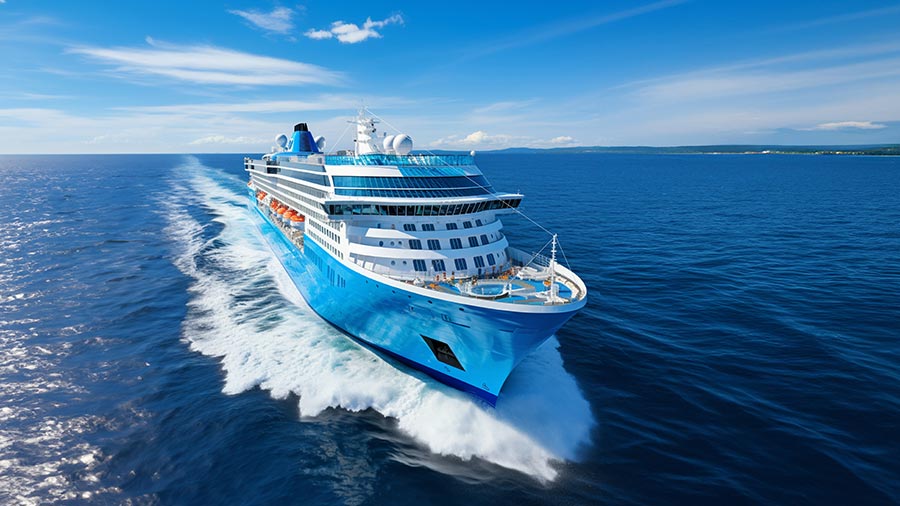China
Hong Kong Protests May Hurt Retailers
Clashes between thousands of pro-democracy protesters and police are set to deal a blow to Hong Kong’s retailers during one of the city’s busiest shopping periods.
Clashes between thousands of pro-democracy protesters and police are set to deal a blow to Hong Kong’s retailers during one of the city’s busiest shopping periods.
The restructuring of the economy and resulting efficiency gains have contributed to a more than tenfold increase in GDP since 1978.
China continues to lose arable land because of erosion and economic development.
The government has also focused on foreign trade as a major vehicle for economic growth.
Some economists believe that Chinese economic growth has been in fact understated during much of the 1990s and early 2000s, failing to fully factor in the growth driven by the private sector and that the extent at which China is dependent on exports is exaggerated.
Technology, labor productivity, and incomes have advanced much more rapidly in industry than in agriculture.
A report by UBS in 2009 concluded that China has experienced total factor productivity growth of 4 per cent per year since 1990, one of the fastest improvements in world economic history.
The market-oriented reforms China has implemented over the past two decades have unleashed individual initiative and entrepreneurship, whilst retaining state domination of the economy.
The ministry made the announcements during a press conference held in Xiamen on the upcoming United Nations Conference on Trade and Development (UNCTAD) World Investment Forum and the 14th China International Fair for Investment and Trade.
“China is now the fifth largest investing nation worldwide, and the largest among the developing nations,” said Shen Danyang, vice-director of the ministry’s press department.
China reiterated the nation’s goals for the next decade – increasing market share of pure-electric and plug-in electric autos, building world-competitive auto makers and parts manufacturers in the energy-efficient auto sector as well as raising fuel-efficiency to world levels.
Although China is still a developing country with a relatively low per capita income, it has experienced tremendous economic growth since the late 1970s.
Agriculture is by far the leading occupation, involving over 50% of the population, although extensive rough, high terrain and large arid areas – especially in the west and north – limit cultivation to only about 10% of the land surface.
In terms of cash crops, China ranks first in cotton and tobacco and is an important producer of oilseeds, silk, tea, ramie, jute, hemp, sugarcane, and sugar beets.
Hogs and poultry are widely raised in China, furnishing important export staples, such as hog bristles and egg products.
Oil fields discovered in the 1960s and after made China a net exporter, and by the early 1990s, China was the world’s fifth-ranked oil producer.
China is among the world’s four top producers of antimony, magnesium, tin, tungsten, and zinc, and ranks second (after the United States) in the production of salt, sixth in gold, and eighth in lead ore.
In addition, implementation of some reforms was stalled by fears of social dislocation and by political opposition, but by 2007 economic changes had become so great that the Communist party added legal protection for private property rights (while preserving state ownership of all land) and passed a labor law designed to improve the protection of workers’ rights (the law was passed amid a series of police raids that freed workers engaged in forced labor).
Shanghai and Guangzhou are the traditionally great textile centers, but many new mills have been built, concentrated mostly in the cotton-growing provinces of N China and along the Chang (Yangtze) River.
Originally posted here:
Hong Kong Protests May Hurt Retailers
China
Foreign Tourist Groups on Cruise Ships Fully Permitted Visa-Free Entry in China

China will allow visa-free entry for foreign tourist groups arriving by cruise ship at 13 ports along the coast, starting May 15, 2024. Visitors must stay with the same ship and in permitted areas for up to 15 days. This policy aims to boost tourism and facilitate high-quality development in the cruise industry.
China’s immigration agency announced that it will grant a visa-free policy for foreign tourist groups to enter China by cruise at all cruise ports along the coast of China, starting May 15, 2024. The tourist group must remain with the same cruise ship until its next port of call and stay within permitted areas for no more than 15 days.
Effective May 15, 2024, the National Immigration Administration (NIA) has officially implemented a visa-free policy for foreign tourist groups entering China via cruise ships. This progressive move aims to enhance personnel exchanges and foster cooperation between China and other nations, furthering the country’s commitment to high-level openness.
Under this policy, foreign tourist groups, comprising two or more individuals, who travel by cruise ship and are organized by Chinese domestic travel agencies, can now enjoy visa-free entry as a cohesive group at cruise ports in 13 cities along the Chinese coast.
The tourist group must remain with the same cruise ship until its next port of call and stay within China for no more than 15 days. The eligible areas for this policy are coastal provinces (autonomous regions and municipalities) and Beijing.
Furthermore, to support cruise tourism development, seven additional cruise ports—Dalian, Lianyungang, Wenzhou, Zhoushan, Guangzhou, Shenzhen, and Beihai—have been included as applicable ports for visa-free transit.
The recent implementation of the visa-free policy for foreign tourist groups entering China via cruise ships is poised to have several significant effects. The policy will provide crucial support for the cruise economy and the overall cruise industry. By facilitating smoother travel for foreign tourist groups, it acts as a catalyst for high-quality development in this sector.
Additionally, under this policy, international cruise companies can strategically plan their global routes by designating Chinese port cities, such as Shanghai, Xiamen, and Shenzhen, as docking destinations. This move is expected to attract more cruise ships to Chinese ports, ultimately bringing in a larger number of international visitors to the Chinese market.
This article is republished from China Briefing. Read the rest of the original article.
China Briefing is written and produced by Dezan Shira & Associates. The practice assists foreign investors into China and has done since 1992 through offices in Beijing, Tianjin, Dalian, Qingdao, Shanghai, Hangzhou, Ningbo, Suzhou, Guangzhou, Dongguan, Zhongshan, Shenzhen, and Hong Kong. Please contact the firm for assistance in China at china@dezshira.com.
China
China’s New Tariff Law: Streamlining and Standardizing Current Tariff Regulations

China’s new Tariff Law consolidates import and export duties, clarifies rules for imposing counter-tariffs, and sets a December 1, 2024 effective date. It codifies existing practices on cross-border e-commerce and rules on the origin of goods into law, impacting trade relations.
China’s new Tariff Law consolidates rules on import and export duties that were previously implemented via several legal documents and makes important clarifications and additions to prior regulations. Among other changes, it stipulates provisions for the Chinese government to impose counter-tariffs on imported goods, codifying these powers into law for the first time. We outline all the notable updates to the China Tariff Law and discuss the implications for the country’ current trade relations.
On April 26, 2024, the National People’s Congress (NPC), China’s legislature, adopted the Tariff Law of the People’s Republic of China (the “Tariff Law”) after several rounds of revisions.
The new Tariff Law will replace the Import and Export Tariff Regulations of the People’s Republic of China, which fall under the purview of the State Council, and adopts many of its provisions.
Previously, Chinese law had not stipulated legislative powers to implement countervailing tariffs, although China was nonetheless able to impose counter-tariffs on trade partners through other means.
China’s new Tariff Law comes into effect on December 1, 2024.
China’s Tariff Law elevates several existing provisions and practices to the level of law. For instance, Article 3 of the Tariff Law clarifies the obligations of cross-border e-commerce platforms for tariff withholding and implementing consolidated taxation.
The Tariff Law also solidifies the rules and regulations on the origin of goods, stipulating that the application of tariff rates shall comply with the corresponding rules of origin. Although this has been previously implemented in practice, it is the first time this has been codified into law.
This article is republished from China Briefing. Read the rest of the original article.
China Briefing is written and produced by Dezan Shira & Associates. The practice assists foreign investors into China and has done since 1992 through offices in Beijing, Tianjin, Dalian, Qingdao, Shanghai, Hangzhou, Ningbo, Suzhou, Guangzhou, Dongguan, Zhongshan, Shenzhen, and Hong Kong. Please contact the firm for assistance in China at china@dezshira.com.
China
Outlook on Bilateral Trade and Investment between China and United Arab Emirates (UAE)

The UAE and China have a strong partnership, with the UAE being China’s top trade partner in the Arab world. Both countries collaborate on various sectors like logistics and technology, showcasing mutual commitment to economic growth and global cooperation. High-level trade and investments continue to drive their relationship.
The UAE and China share a robust partnership integral to both countries’ development and foreign policy goals, exemplifying a model of collaboration. Bilateral trade thrives, with the UAE as China’s top trade partner in the Arab world, while investments span key sectors like logistics and technology. This comprehensive strategic partnership continues to evolve, showcasing mutual commitment to economic growth and global cooperation.
The United Arab Emirates (UAE) holds a significant position in China’s trade and commercial connections within the Middle East, particularly in the Arab Gulf region. This partnership is integral to China’s broader strategic initiatives, including the Belt and Road Initiative (BRI), which the UAE actively supports.
Additionally, the UAE plays a crucial role in advancing China’s foreign policy objectives, such as enhancing South-South cooperation, particularly in technical collaboration among developing nations and the Global South in areas like resources and technology.
In this article, we delve into the dynamics of bilateral trade and investment between the UAE and China, exploring the key factors driving their economic relationship and the opportunities it presents for mutual growth and prosperity.
China and the UAE first established their diplomatic relations in 1984. While China has an embassy in Abu Dhabi and a consulate general in Dubai, the UAE has a consulate general in Hong Kong and an embassy in Beijing. China and the UAE have long been close partners, collaborating extensively on economic, political, and cultural fronts.
In 2018, Chinese President Xi Jinping went on a state visit to the UAE, making history as the first Chinese head of state to visit the country in the previous 29 years. The visit was instrumental in lifting bilateral relations to a ‘comprehensive strategic partnership’.
High-level trade has always been the foundation of bilateral ties. Bilateral commerce between China and the UAE reached new heights in 2021, surpassing US$75.6 billion. Additionally, as of 2022, about 6,000 Chinese businesses operate in the UAE, with a sizable Chinese population working primarily in the infrastructure and energy sectors. The UAE is also China’s second-largest economic partner in the Middle East, after Saudi Arabia.
This article is republished from China Briefing. Read the rest of the original article.
China Briefing is written and produced by Dezan Shira & Associates. The practice assists foreign investors into China and has done since 1992 through offices in Beijing, Tianjin, Dalian, Qingdao, Shanghai, Hangzhou, Ningbo, Suzhou, Guangzhou, Dongguan, Zhongshan, Shenzhen, and Hong Kong. Please contact the firm for assistance in China at china@dezshira.com.












